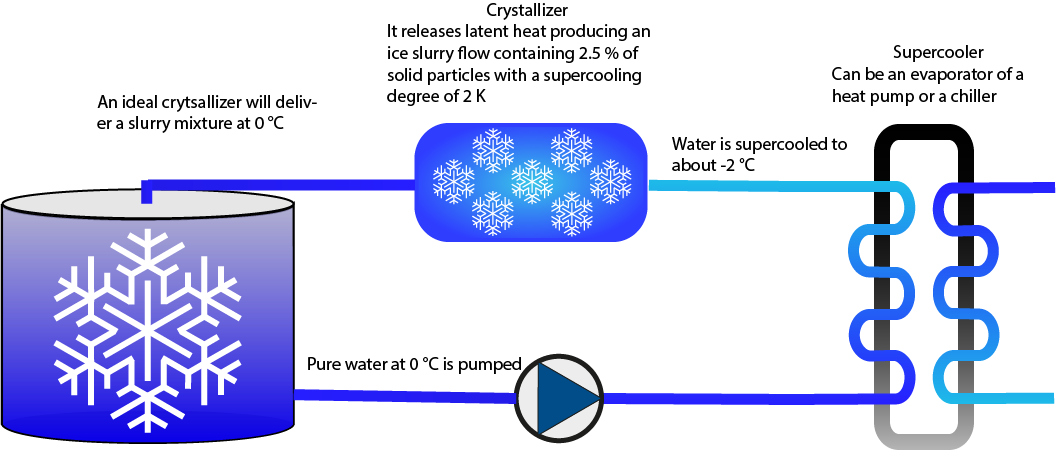The use of supercooled water is an efficient method to make ice slurries. In the supercooling process, a stream of water, which is flowing into an evaporator (supercooler), is cooled below its normal freezing point without crystallizing. Upon leaving the evaporator, the supercooled water flow is physically disturbed in the crystallizer to generate ice crystals. The main advantage of this technique is that it uses a technology without any mechanical devices for removing ice from a heat exchanger wall, which would require energy to operate and a high maintenance. In addition, the supercooling technology operates with high evaporating temperatures, increasing the energy efficiency of the heat pump.

However, crystallization can occur at any time when the temperature of the water is below the freezing temperature, e.g. inside the supercooler, leading to a blockage. The best way to utilize a continuous ice generation with supercooling water is to find an effective way to prevent icing on the surface of the supercooling heat exchanger.
In theory, a high degree of water supercooling can be achieved if water does not find a single nucleation site to trigger a crystallization process. In technical applications, it is impossible to cool down water without water having contact to the heat exchanger surface. Thus, the surface of the heat exchanger needs to be treated in a way that the near surface water has no nucleation sites to grow the initial ice crystal. Researchers from TRI-HP project are investigating different icephobic coatings and materials to prevent/delay ice formation and thus avoid a frequent heat exchanger blockage.